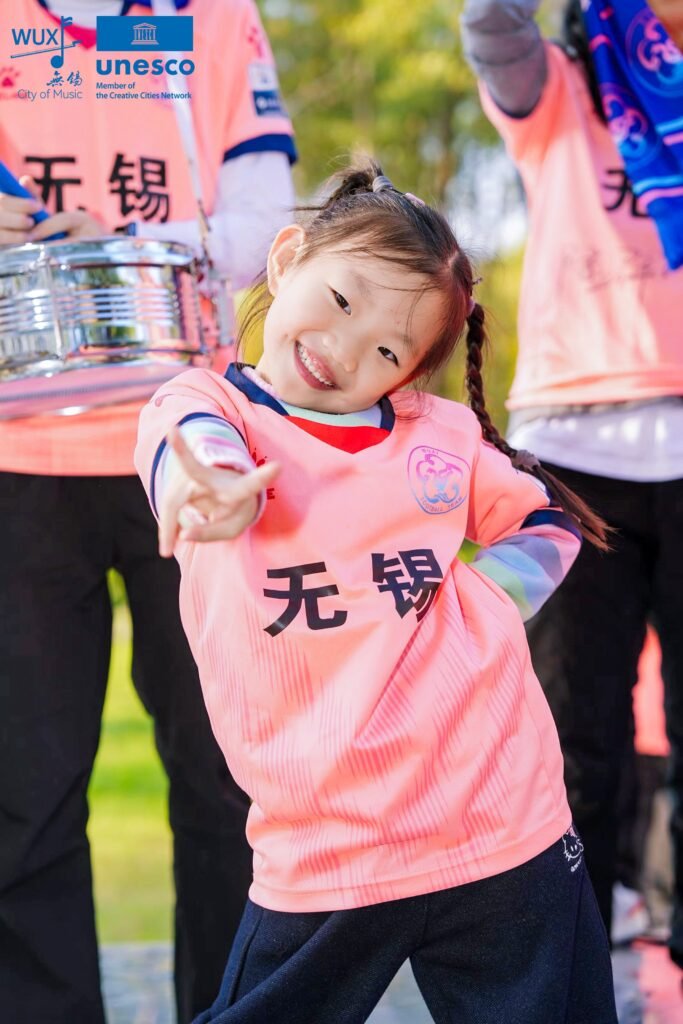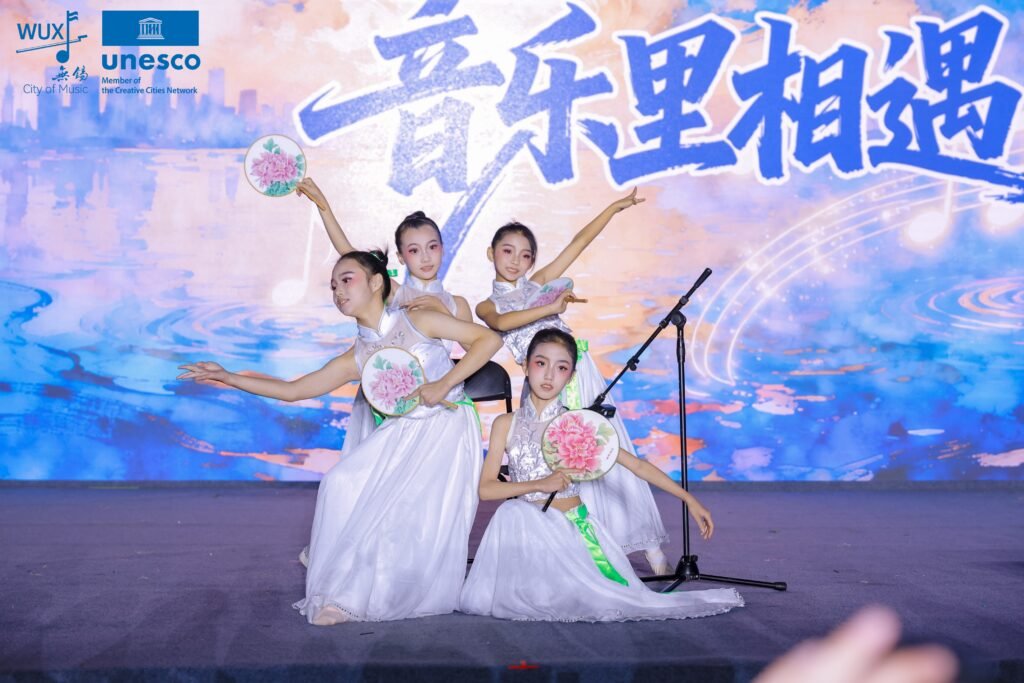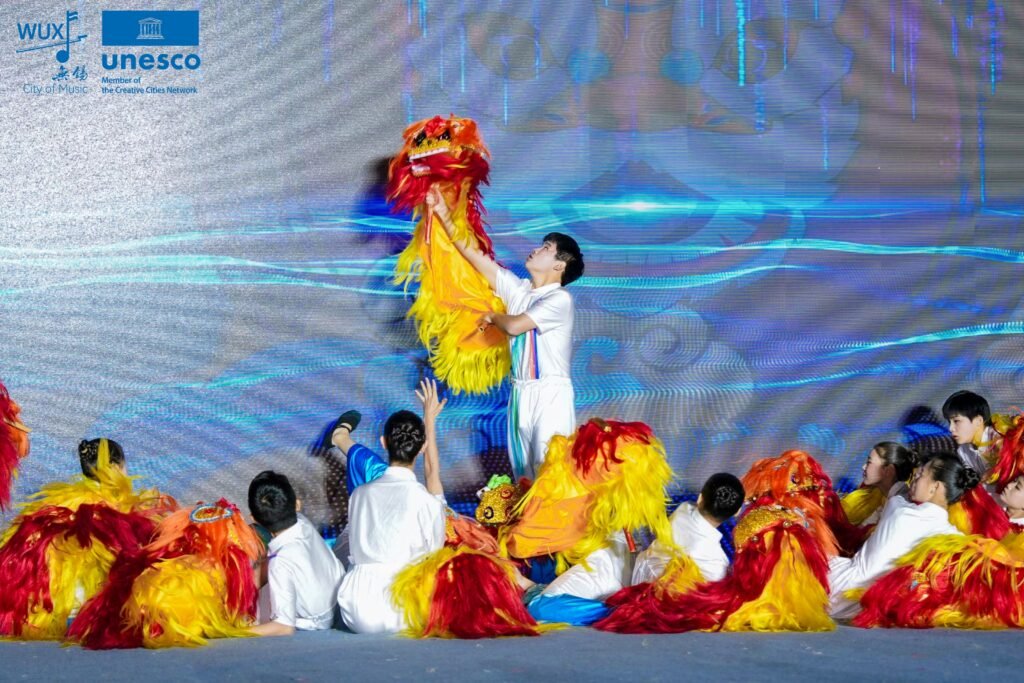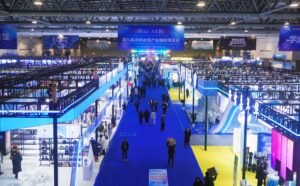The city of Wuxi, known for its natural beauty, elegant architecture, deep history, and industrial development, became China’s first city to join UNESCO’s Creative Cities Network in the field of “Music” after a ceremony held on November 15. During the event on Bogong Island (渤公岛), located on the shores of Lake Tai (太湖), UNESCO representative Denis Bax presented the official approval letter to the Wuxi Municipal Government after a grand ceremony. Immediately afterward, a series of music-themed events took place simultaneously in many parts of the ecological park. It is worth noting that, in Türkiye, Kırşehir and Şanlıurfa are also included in UNESCO’s Creative Cities Network in the music category.

More than 30 music groups and many individual artists performed, turning the city into a true carnival. One of the reasons Wuxi received this title is not only the investment and support provided for music and the arts, but also the strong interest shown by residents of Wuxi and surrounding regions. On almost every corner, it was possible to encounter a different performance or musical activity. While a wind-instrument ensemble played at one corner of the park, young or elderly visitors sitting on nearby benches could spontaneously join in.

Of course, the musical history of the Yangtze Delta – Jiangsu Region is far from limited to recent decades. One of China’s most iconic two-stringed bowed instruments, the Erhu (二胡, Pinyin: Èrhú), is among the region’s major contributions to Chinese music. The reason the Erhu became widely recognized—and why it appeared in the logo used during Wuxi’s UNESCO application process—is the work of Liu Tianhua (1895–1932), a renowned composer born in Wuxi. Liu transformed the Erhu from a street instrument into a standardized, respected musical tool. This clearly reflects China’s respect for its traditional values and its ability to harmonize them with modern art.
One of the most striking elements of the festival and ceremony was the creation of a special “Music Map” for Wuxi by China’s well-known digital mapping app, Baidu Maps (百度地图, Bǎidù Dìtú). When users type “Wuxi Music Map” in Chinese into the search bar, the app lists 20 music-related locations in the city. All of these are places associated with musical culture, creating a natural route for music enthusiasts visiting Wuxi. Another important project is the Shared Stage (共享舞台 – Gòngxiǎng Wǔtái) initiative launched by the Wuxi Municipal Government. This “solidarity project” allows amateur musicians to give free performances in public spaces, while audiences can attend at no cost. By removing financial and access barriers, the program provides equal performance opportunities for anyone with musical passion and talent.

When traveling from Bogong Island to the area known as Lotus Blossom Bay (拈花湾, Pinyin: Niánhuā Wān), visitors encounter an extraordinary park decorated with Jiangsu’s ancient architectural style. On regular days, the entrance fee to this park is 150 Yuan (approximately 800 TL), and it offers countless activities to enjoy throughout the day. One of the most impressive spots in the park is the massive “Smiling” area, built through a large-scale investment. The space features a light and fireworks show supported by drones. Layered cylindrical panels move harmoniously through advanced technology and artistic composition, while performers create an atmosphere reminiscent of scenes from an anime film. Particularly for audiences in the West, where Chinese mythology often carries mystical themes, this show demonstrates how blending traditional narratives with modern technology can produce truly stunning results.

Lotus Bay offers a long scenic walking route. Visitors may explore with 8–10-seat golf carts provided by the park or walk at their own pace to discover various attractions. As is now common throughout China, the park’s food and beverage services are impressive—highly organized, visually appealing, and carefully integrated into the overall experience. While waiting for a cup of coffee at a small stand, you might suddenly find a dance group performing a simple yet immersive routine that transports you back thousands of years, allowing you to experience two contrasting emotions at the same time.

Abroad Africa AI Beijing Belt & Road BLCU BRICS China chinese CPC CSC Culture Economy education EU Guizhou Kültür Langauge movie Multipolarity Russia scholarship science Shanghai Sino Sino Turkish Sino Turkish Sino Turkish Sino Turkish Sino Turkish Studies Sino Turkish Studies Sino Turkish Studies Sino Turkish Studies space Syria Taiwan Tariff trump Turkiye Türkiye University USA Xinjiang ZJUT Çin





